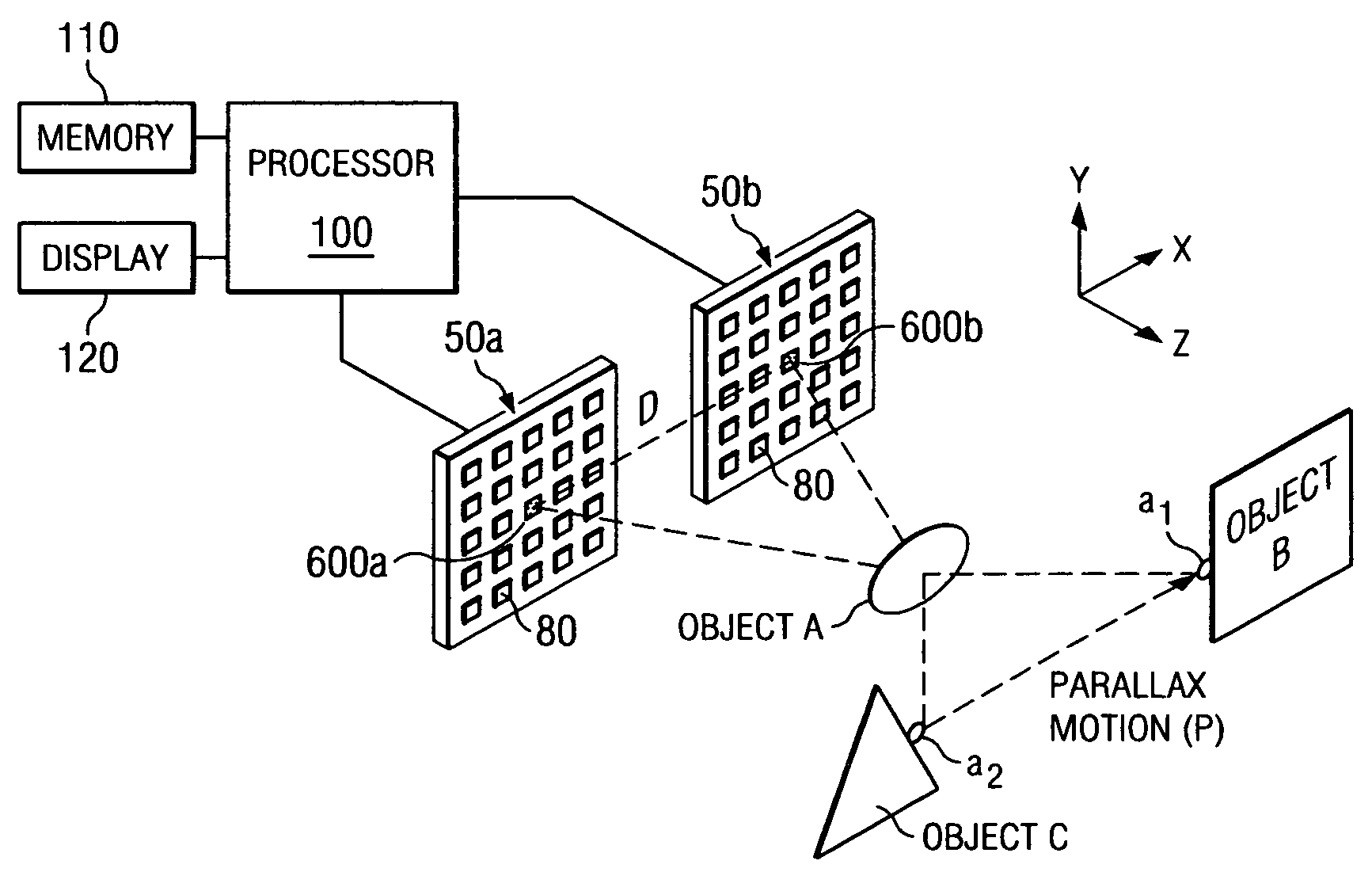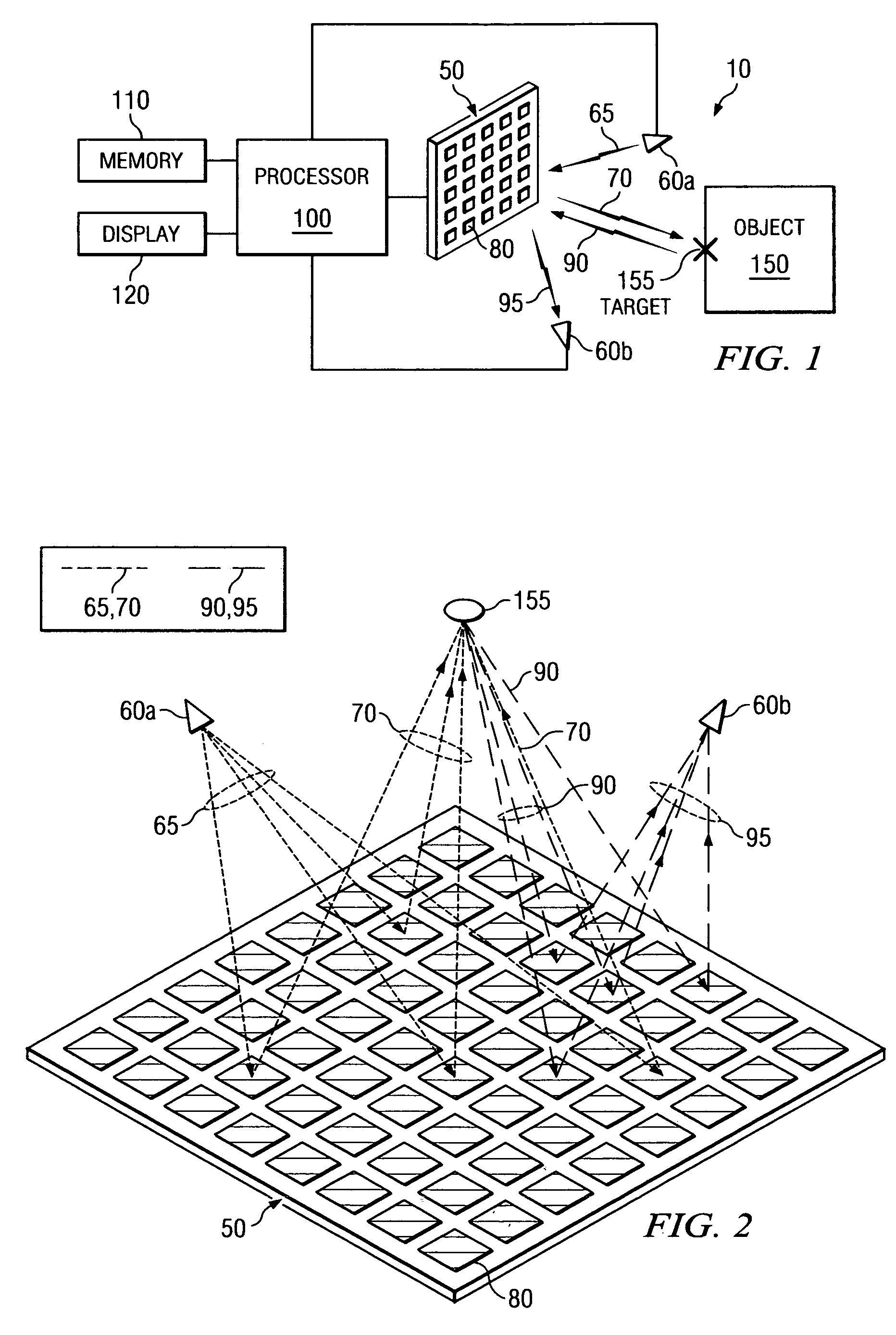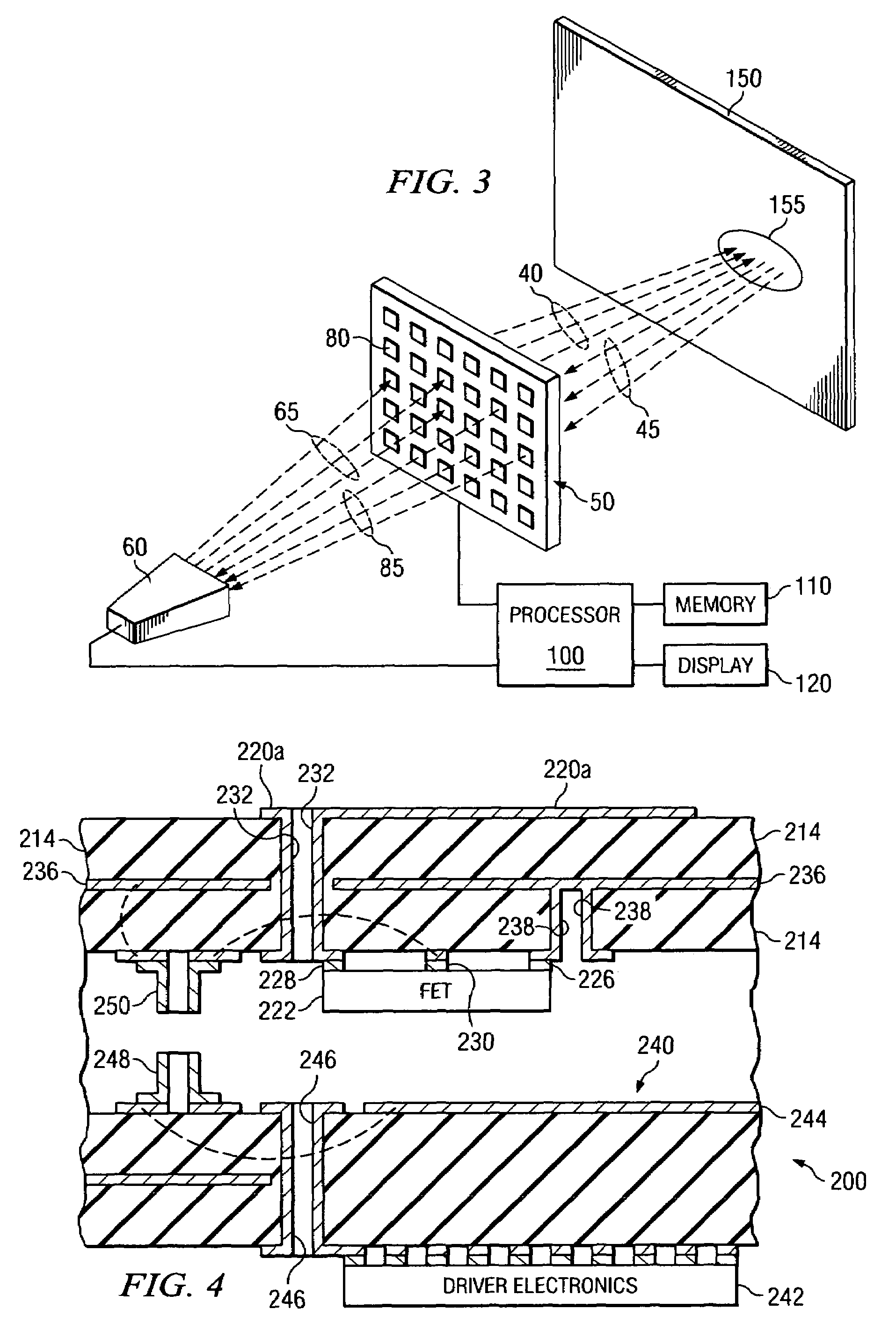System and method for stereoscopic anomaly detection using microwave imaging
a technology of stereoscopic anomaly detection and microwave imaging, which is applied in the field of system and method for stereoscopic anomaly detection using microwave imaging, can solve the problems of inability to detect non-metallic objects, inability to perform physical inspection by security personnel, and prone to false alarms
- Summary
- Abstract
- Description
- Claims
- Application Information
AI Technical Summary
Problems solved by technology
Method used
Image
Examples
Embodiment Construction
[0025]As used herein, the terms microwave radiation and microwave illumination each refer to the band of electromagnetic radiation having wavelengths between 0.3 mm and 30 cm, corresponding to frequencies of about 1 GHz to about 1,000 GHz. Thus, the terms microwave radiation and microwave illumination each include traditional microwave radiation, as well as what is commonly known as millimeter wave radiation. In addition, as used herein, the term “microwave imaging system” refers to an imaging system operating in the microwave frequency range, and the resulting images obtained by the microwave imaging system are referred to herein as “microwave images.”
[0026]Referring now to FIG. 1, there is illustrated an exemplary microwave imaging system 10, in accordance with embodiments of the present invention. The microwave imaging system 10 can be used, for example, to provide ongoing surveillance to control a point-of-entry into a structure, monitor passers-by in an area (e.g., a hallway, a...
PUM
 Login to View More
Login to View More Abstract
Description
Claims
Application Information
 Login to View More
Login to View More - R&D
- Intellectual Property
- Life Sciences
- Materials
- Tech Scout
- Unparalleled Data Quality
- Higher Quality Content
- 60% Fewer Hallucinations
Browse by: Latest US Patents, China's latest patents, Technical Efficacy Thesaurus, Application Domain, Technology Topic, Popular Technical Reports.
© 2025 PatSnap. All rights reserved.Legal|Privacy policy|Modern Slavery Act Transparency Statement|Sitemap|About US| Contact US: help@patsnap.com



